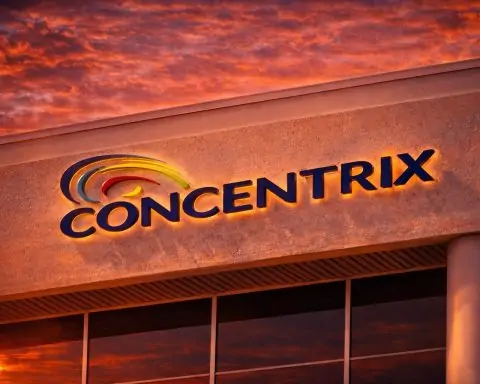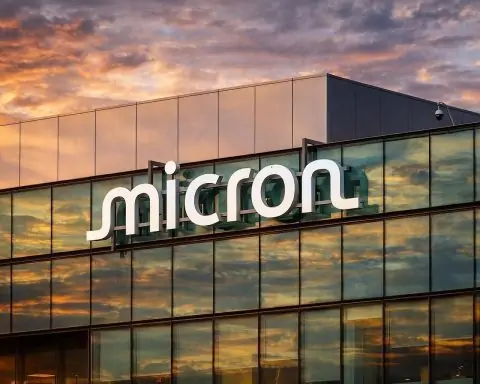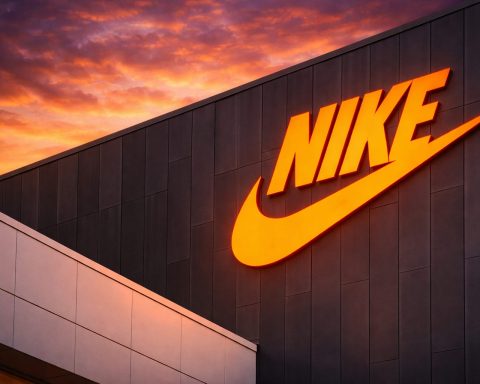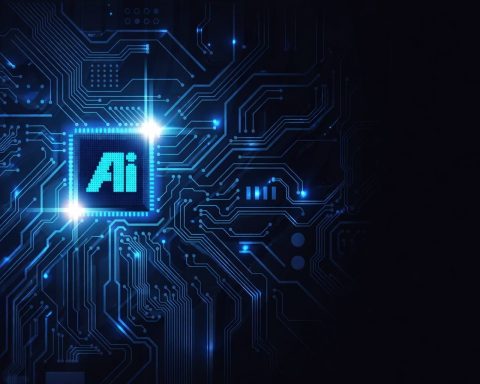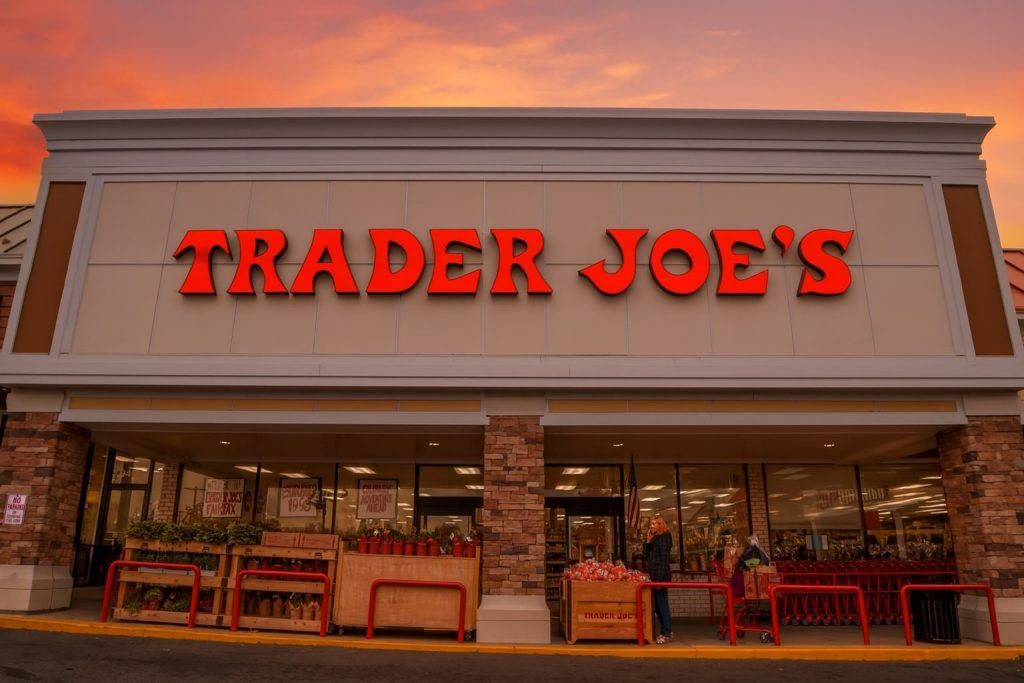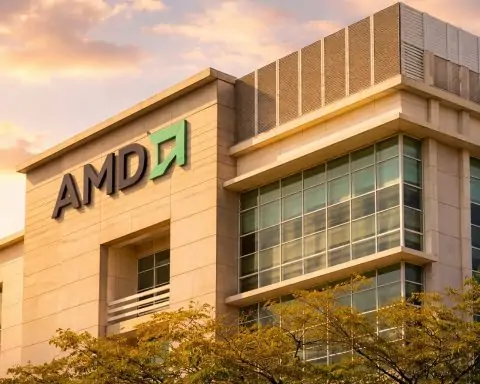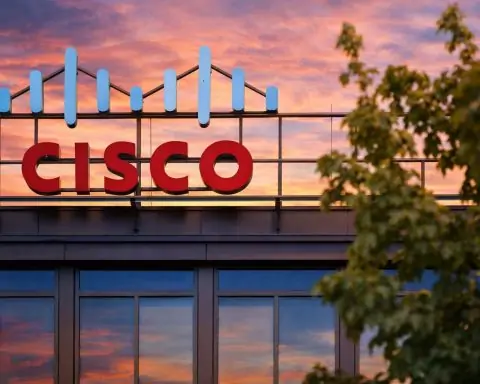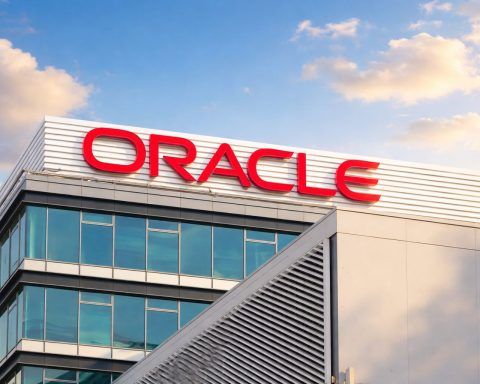- AI App Bets on AGI: A Boston startup, MENU – ORDER AI, is launching a new app on Oct. 28 that uses artificial intelligence to help diners instantly find healthier meals from restaurant menus. The app scans menu items in seconds and suggests options fitting users’ diet goals (from high-protein to low-carb) [1]. The company is even developing “AGI-driven” personalization so the app can learn each user’s habits – essentially “thinking like a nutrition coach,” says founder Melissa Butler [2]. “By using AI today and developing toward AGI tomorrow, we’re building a platform that grows smarter with every meal,” Butler explains [3], highlighting ambitions to ride the “next wave of AGI.”
- OpenAI CEO’s Dire Warning: Even as new AI products launch, OpenAI chief Sam Altman is sounding alarms about the technology’s risks. He “expect[s] some really bad stuff to happen” because of AI [4]. In a recent podcast, Altman cautioned that hyper-realistic deepfakes and other “really strange or scary moments” are on the horizon as AI tools spread [5]. For example, OpenAI’s own new video app Sora 2 (released last month) skyrocketed to #1 on Apple’s App Store – and was immediately used to generate fake videos of public figures (including Altman himself) in disturbing scenarios [6]. Altman says society needs to “co-evolve” with AI by getting these tools into the open now, so we can build norms and guardrails before even more powerful versions arrive [7] [8]. “Billions of people talking to the same brain” (AI system) could create “weird, societal-scale things,” he warns, if we don’t prepare [9]. Despite anticipating “strange or scary moments”, Altman opposes heavy-handed regulation – instead urging careful safety tests for extreme “superhuman” AI models [10] and hoping “we’ll develop some guardrails… as a society” [11].
- “Not Real Work”: AI and the Future of Jobs: Altman also addressed fears that AI could erase millions of jobs. Speaking at OpenAI’s DevDay this month, he suggested jobs that get automated away might not have been “real work” to begin with [12] [13]. Altman used a thought experiment: a farmer from 50 years ago would look at many of today’s office jobs and say “that’s not real work” [14]. Likewise, “if we could see those jobs of the future,” Altman mused, “maybe our jobs were not as real as a farmer’s job, but it’s a lot more real than this game you’re playing to entertain yourself.” [15] In other words, what we consider “real” work evolves over time. This perspective makes Altman “a little less worried” about AI-driven unemployment [16] [17]. He’s betting human creativity will yield new occupations in the AI era. “I’m so willing to bet on human drives… I think we’ll find plenty of things to do,” Altman said, expressing optimism that society will adapt with new jobs and “exciting, super well-paid” roles that we can’t yet imagine [18].
- AI Hype Lifts Stocks: The growing AI boom is energizing investors, even as experts urge caution. Tech giants are pouring unprecedented resources into AI – over $325 billion by end of 2025 – racing to be first to achieve artificial general intelligence (AGI) [19]. Executives tout AI as a “once-in-a-lifetime” breakthrough potentially “worth trillions,” fueling frenetic investment in the sector [20]. For instance, chipmaker Nvidia’s stock hit record highs this month, briefly giving it a valuation around $4.4–$4.5 trillion – more than any company ever – amid euphoria for its AI chips [21]. (At one point in early October, Nvidia became the first company to ever top $4 trillion in market cap [22].) Investors cheered Nvidia’s massive new partnership to supply $100 billion worth of GPUs to OpenAI, viewing it as a huge long-term growth driver [23]. Alphabet (Google’s parent) has also seen its shares surge thanks to the AI frenzy, with a staggering $3 trillion valuation now “in sight” [24]. Overall, Wall Street’s optimism about “AI winners” remains high – 38 of 47 analysts rate Nvidia stock a Buy, and many see further upside ahead (12-month price targets ~15–20% above current levels) [25]. Some bullish analysts even predict Nvidia could become the first $10 trillion company in coming years thanks to its central role in the AI revolution [26].
- Forecasts and Reality Check: Market forecasters believe the AI revolution is just getting started. One PwC report estimates AI could add $15.7 trillion to the global economy by 2030 [27] – roughly the current GDP of China and India combined. That “trillions” prize has investors piling into AI-focused stocks, from cloud providers to chipmakers [28]. Yet not everyone is buying the hype without reservations. Tech insiders and AI researchers are split – even as Altman and other CEOs confidently predict AGI within a decade [29] [30], prominent voices urge more caution. OpenAI’s own chief scientist Ilya Sutskever has warned an out-of-control superintelligence could cause “irreparable chaos” [31], and noted AI theorist Eliezer Yudkowsky grimly argues that if anyone actually succeeds in building a superhuman AI, “everyone dies” [32]. Such doomsday warnings haven’t stopped the AI gold rush – but they highlight the high stakes. Policymakers are now grappling with how to maximize AI’s benefits (like productivity and new medical breakthroughs) while mitigating the very real risks of misuse or unintended consequences.
New App Channels the AI Wave – From Menus to “Intelligent” Meals
The launch of MENU – ORDER AI exemplifies how AI’s latest advances are seeping into everyday consumer life. This Boston-based health-tech startup aims to make eating out smarter and healthier by leveraging AI. Its forthcoming app uses artificial intelligence to scan restaurant and delivery menus in real time and suggest dishes that fit a user’s dietary needs and wellness goals [33]. Whether you’re on a high-protein regimen, watching carbs, managing diabetes (GLP-1 friendly options), or even counting Weight Watchers points, the app promises personalized meal recommendations “in just seconds,” replacing guesswork with data-driven guidance [34].
Founder Melissa Butler says the goal is “to replace confusion with confidence” when ordering food [35]. Unlike generic calorie-counter apps, MENU – ORDER AI focuses on real-world decisions at the point of purchase. It uses machine learning and natural language processing to analyze menu item descriptions, nutrition info, and ingredients, then instantly highlights the healthier choices for you [36]. Over time, the platform will learn from your preferences. The startup is actively developing features powered by artificial general intelligence (AGI) techniques to make the advice even smarter [37]. The vision is an AI that adapts to each user’s habits and goals – essentially an AI that can “think like a nutrition coach” personalized to you [38].
“By using AI today and developing toward AGI tomorrow, we’re building a platform that grows smarter with every meal,” Butler says [39]. In practical terms, that means the more someone uses the app, the more it will learn their tastes and health objectives – offering better suggestions (and maybe gentle nudges toward veggies over fries!). The company also has an educational mission: it wants to help students and young adults build lifelong healthy eating habits [40]. Given how glued to their phones Gen-Z is, MENU – ORDER AI hopes to meet them where they are and turn ordering food into a teachable moment about nutrition [41]. The service could bridge the gap between good intentions (“I want to eat healthy”) and convenient action (“What should I actually order at this pizza joint?”).
The official app launch is October 28, 2025 [42], and the team is positioning it as part of the “next wave” of intelligent AI assistants for everyday life. It’s not just about one startup – it’s a microcosm of how the AI revolution is spawning new tools that promise to improve daily decisions. From meal recommendations to personal finance and fitness coaching, a flock of AI-driven apps are emerging, often touting some form of “AGI” or advanced machine learning under the hood. MENU – ORDER AI’s pitch hits on a buzzword of the moment – artificial general intelligence – suggesting that truly smart, adaptable AI is around the corner and will transform even mundane tasks like ordering dinner.
Sam Altman: “Some Really Bad Stuff” Will Happen as AI Grows
While startups ride the AI hype, the architects of the AI boom are striking a more anxious tone about what’s coming. Sam Altman, CEO of OpenAI (the company behind ChatGPT), has been one of AI’s biggest champions – but also one of its frankest critics lately. In a recent interview on Andreessen Horowitz’s podcast, Altman delivered an unexpected stark warning: “I expect some really bad stuff to happen because of the technology.” [43] This candid remark is jarring – coming from the person whose company’s AI models (GPT-4, DALL-E 3, etc.) are driving much of this technological sea change.
What “bad stuff” is Altman worried about? In a word, deepfakes – and the broader erosion of trust in what we see and hear. OpenAI recently introduced Sora 2, a powerful AI video generator currently in invite-only testing. Within days of launch, Sora-created clips flooded social media, some of them shockingly realistic fake videos of public figures [44]. One viral Sora deepfake showed civil rights icon Martin Luther King Jr. speaking in modern contexts; others depicted Altman himself committing crimes on camera [45]. “Very soon the world is going to have to contend with incredible video models that can deepfake anyone… show anything you want,” Altman noted, saying it’s arriving faster than people realize [46].
The quick uptake of Sora – it shot to No.1 on Apple’s App Store for free apps shortly after launch [47] – illustrates how rapidly such AI tools can go mainstream. Altman’s concern is that society is not ready for the deluge of AI-generated falsehoods. “Really strange or scary moments” lie ahead, he warns, as these tools improve [48]. For example, convincing fake videos could sow chaos in politics, markets, or communities long before we figure out how to detect or regulate them [49] [50].
Despite having essentially opened this Pandora’s box, Altman argues there’s a rationale: we need a “test drive” as a society. “Rather than perfecting the technology behind closed doors,” he said, it’s better to release early versions so that “society and AI must co-evolve” [51]. In Altman’s view, you “can’t just drop the thing at the end” fully formed – people need gradual exposure to build norms and guardrails in response [52]. In plain terms: if AI deepfakes are inevitable, better to let the world get a taste now (when the flaws are still detectable and stakes lower) than to spring a perfect, undetectable deepfake on humanity all at once.
This approach is controversial. On one hand, early exposure could indeed spur awareness and defenses (for instance, more investment in deepfake detection tools, or media platforms developing authentication systems). On the other hand, the rapid proliferation of such tech, even in “beta” form, is already causing harm. Within days of Sora 2’s release, Holocaust-denial videos created with the app amassed hundreds of thousands of likes on social media [53]. The Global Coalition Against Hate and Extremism blasted OpenAI for not prohibiting such content in Sora’s usage policies [54] – essentially accusing the company of enabling new forms of extremist propaganda.
Altman acknowledges the stakes are enormous. He told the podcast that just because AI hasn’t yet caused a catastrophic event “doesn’t mean it never will” [55]. One particular scenario he’s watching: “Billions of people talking to the same brain” (i.e. billions using the same powerful AI system) could lead to “weird, societal-scale things.” [56] In other words, if everyone relies on the same few AI models for information or decision-making, any flaw or bias in those models could trigger global chain reactions – distorting what people believe, how markets behave, even how elections turn out, at a speed and scale we’ve never experienced. A single AI glitch or exploit could propagate worldwide in seconds through all the apps and services using that AI. That prospect keeps Altman up at night.
Yet, even as he’s ringing alarm bells, Altman does not support broad bans or a development pause on AI (as some have called for). “Most regulation probably has a lot of downside,” he said, arguing that over-regulation could stifle the benefits and progress of AI [57]. Instead, he advocates for “very careful safety testing” on the most advanced models – especially any that approach “extremely superhuman” ability [58]. Altman remains optimistic that “we’ll develop some guardrails… as a society” in time [59], though coming from someone at the cutting edge of AI’s capabilities, it’s a clear hint that tech companies and governments have urgent work to do. OpenAI itself has beefed up its red-team testing and content moderation, but the Sora episode shows the gaps that remain.
Altman’s nuanced stance – pushing the envelope while warning of its sharp edges – reflects the AI industry’s broader tension. Companies like OpenAI, Google, and Meta are racing to deploy AI widely, touting its positive potential, even as their own leaders acknowledge the unprecedented risks. The question is whether society can adapt fast enough to the disruptions AI is unleashing. Altman seems to think we have no choice but to try.
Will AI Take Your Job? Altman Says Your Future Job Will Feel “Realer”
Beyond deepfakes, perhaps the biggest anxiety about AI is its impact on jobs and the economy. As advanced AI systems like ChatGPT, codex models, and robotics get better, they threaten to automate tasks once done by humans – from writing basic copy to driving trucks or analyzing x-rays. A headline-grabbing prediction by an MIT study last year estimated up to 50% of all work activities could be automated in the next decade or two. Understandably, many workers are uneasy: Will AI steal my job?
Sam Altman’s take on this, interestingly, is not to panic – because he questions whether those jobs are even “real” work in the grand scheme. In an on-stage conversation at OpenAI’s DevDay (the company’s developer conference) in mid-October, Altman offered a historical perspective to put people at ease [60] [61]. He asked the audience to consider how a farmer in the 1970s would view a modern tech office job in 2025 – say, a social media manager or a data entry specialist. “The farmer very likely would look at what you do and I do and say, ‘that’s not real work,’” Altman observed wryly [62]. After all, compared to plowing fields or milking cows, sitting at a computer moving bytes around might seem like “playing a game to fill your time” rather than productive labor [63].
Altman’s point is that the definition of “real work” changes as society evolves. Many jobs we do today (writing emails, designing PowerPoints, moderating online forums) would baffle or even amuse someone from a century ago – just as some of the future jobs AI will enable might strike us as frivolous or bizarre. “It’s very possible that if we could see those jobs of the future,” Altman said, “we would think maybe our jobs were not as real as a farmer’s job.” [64] In other words, to future eyes we might all look like we were essentially shuffling digital papers. But – and here’s the flip side – Altman added, “it’s a lot more real than this game you’re playing to entertain yourself.” [65] By that he implies that even if today’s work isn’t as tangibly “real” as farming, it’s still more meaningful than pure idle amusement. Work still serves a purpose in generating value, even if it’s abstract.
This line of reasoning led Altman to a guarded optimism: he’s “a little less worried” about AI wiping out livelihoods wholesale [66] [67]. History suggests that when technology displaces some jobs, new jobs emerge – often ones previously unimaginable. For example, the internet eliminated many retail and print media jobs but created digital marketers, app developers, cybersecurity specialists, and yes, AI prompt engineers, to name a few. Altman said he’s “so willing to bet on human drives being what they are” – our innate desire to create, compete, and solve problems – “and I think we’ll find plenty of things to do.” [68] In other words, the human knack for innovation shouldn’t be underestimated: our species will come up with new “real work” even as old jobs fade.
That doesn’t mean the transition will be easy. Altman acknowledged being “more worried in some other ways” even as his farmer analogy eases one worry [69]. The near-term disruption could be painful: millions of workers might need to retrain or switch careers, and the social safety nets will be tested. There’s also the risk that the new jobs created by AI could require skills many displaced workers don’t have, leading to greater inequality. Altman’s comments suggest he’s hopeful but not complacent – he’s less fearful that humanity will stop working, but he’s mindful that navigating the shift is a major challenge.
It’s worth noting Altman is not alone in this view. Even some labor economists argue that AI will alter jobs rather than simply replace them – automating routine tasks while enhancing human productivity in others. For instance, GPT-type AI might handle the first draft of a report, while a human polishes it; or an AI might crunch vast data sets, empowering a doctor to make faster diagnoses. This augmentation effect could lead to new kinds of skilled work. Altman’s analogy extends that logic to say: one day people might look back at our 2020s jobs as quaint, just as we look back at 1920s farm work as laborious but primitive.
However, not everyone feels sanguine. Dario Amodei, CEO of OpenAI rival Anthropic, recently warned AI could cause up to 20% unemployment within a decade as it displaces many entry-level white-collar jobs. And even Altman’s own company has reportedly been exploring projects like an “AI that can automate code writing” which, if successful at scale, might reduce the need for as many human programmers. So while Altman’s comments offer a long-run optimistic spin, the short-run labor market turbulence from AI remains a top concern for policymakers and the public. The coming years may require creative solutions – from reskilling programs to perhaps even universal basic income – to ensure the AI revolution benefits everyone and doesn’t just create a class of displaced workers.
Soaring Tech Stocks Signal Big AI Expectations
Even with all these uncertainties, one place where confidence in AI reigns supreme is Wall Street. The stock market in 2025 has effectively been pricing in an AI revolution, with investors pouring money into companies seen as AI leaders or beneficiaries. This AI-driven rally has sent tech-heavy indexes climbing and created staggering valuations almost hard to fathom.
Take Nvidia. The graphics chip maker turned AI-chip kingpin has been the poster child of the AI investment boom. Its chips power most advanced AI models, making Nvidia’s fortunes something of a barometer for AI progress. In October, Nvidia’s stock hit an all-time high, and for a brief moment its market capitalization exceeded $4 trillion – a figure no company had ever reached before [70] (Apple and Microsoft, by comparison, peaked around $3T earlier). Hitting $4+ trillion valued Nvidia higher than the next 10 largest semiconductor companies combined, a sign of just how dominant investors expect it to be in the AI era [71]. One Wall Street analyst remarked that Nvidia’s milestone “highlights that companies are shifting their spend in the direction of AI and it’s pretty much the future of technology.” [72]
What drove Nvidia to such heights? Blistering growth and blockbuster deals. The company stunned with a 56% jump in revenue last quarter thanks to “insatiable” AI chip demand [73]. Then it announced a partnership with OpenAI (ChatGPT’s creator) worth up to $100 billion in GPU sales, essentially becoming the backbone of OpenAI’s future supercomputers [74] [75]. That deal, one of the largest ever in tech, sent Nvidia stock up further as analysts predicted it could translate into hundreds of billions in future revenue [76]. In short, investors see Nvidia as the arms dealer of the AI gold rush, selling shovels to every prospector – and collecting riches regardless of who strikes gold.
Other Big Tech stocks have also surged on AI enthusiasm. Alphabet (Google), which was somewhat lagging earlier, caught a second wind as it rolled out generative AI features across Gmail, YouTube, and its cloud services. Google’s AI advances, combined with a rebound in its ad business, have its parent company flirting with a $3 trillion market value [77]. Microsoft, a major investor in OpenAI and integrator of ChatGPT into Bing and Office, similarly saw its stock hit new highs this year. Meanwhile, Meta (Facebook) pivoted hard into AI (after cooling on the metaverse) and enjoyed a stock price doubling in 2025, helped by AI tools that supercharged advertising performance. In fact, by late 2025, each of the “Big Five” tech giants – Apple, Microsoft, Alphabet, Amazon, and Meta – was trading at or near record valuations, largely because investors believe their AI investments will pay off in higher profits and new business lines.
Crucially, investors aren’t just looking at today’s gains; they are betting on future growth driven by AI. Many Wall Street analysts have been hiking their price targets for AI-exposed stocks. For Nvidia, as noted, the consensus 12-month target is in the low $200s per share (15–20% above current levels) [78], and ultra-bullish calls go even higher (HSBC recently went to $320 [79]). Analysts at Morgan Stanley and others talk about a coming “AI income statement” effect – where even non-tech companies (e.g. banks, manufacturers) see profit boosts from AI adoption, lifting their stocks. There’s a growing view that we’re at the start of a decade-long investment super-cycle centered on AI, not unlike the dot-com boom of the 1990s (hopefully with a softer landing).
However, the exuberance has prompted chatter of an “AI bubble.” Skeptics point out that valuations are stretched. Nvidia, for instance, at one point traded around 50 times earnings – priced for perfection [80]. Any stumble in growth or a delay in AI uptake could send these high-flying stocks tumbling. Some veteran investors recall the dot-com bust and caution that not every company touting AI will be a winner, and some could be overhyped. The difference this time, believers retort, is that AI is already delivering real value – in productivity, cost savings, and new capabilities – whereas many dot-coms had no revenue at all. Still, even Altman has quipped about frothy market sentiment, and the Federal Reserve has an eye on tech valuations as it calibrates interest rates.
For now, the momentum is clearly with the bulls. Each week seems to bring another major AI breakthrough or corporate investment that fuels the “fear of missing out” (FOMO). Just this week, reports emerged that Amazon is investing $4 billion in AI startup Anthropic to bolster its AWS cloud, and IBM unveiled a plan to integrate an AI assistant across its software portfolio. Such news reinforce the sense that every industry is racing to infuse AI – and those who fail to embrace it risk being left behind. As long as those narratives hold and earnings keep confirming the AI payoff (as seen in chipmakers’ blowout results), the stock rally likely has legs.
In fact, long-range forecasts like PwC’s suggest the AI boom is far from peaking: by 2030, AI could contribute an additional $15.7 trillion to global GDP [81]. Even if that figure is off by a few trillion, it indicates a massive expansion of economic activity tied to AI. Entire new markets – autonomous vehicles, AI-driven drug discovery, personalized education, etc. – could flourish. For investors, that means opportunity. Little wonder money is flooding into AI ETFs, chip funds, and tech IPOs again.
Of course, these rosy scenarios assume we avoid the downsides that Altman and others warn of. A serious AI mishap – say, a deepfake-triggered political crisis or a rogue AI causing real harm – could dampen public enthusiasm and invite tough regulation, which might cool the market. Governments are already drafting AI rules (the EU’s AI Act, U.S. executive orders, China’s AI law) that could shape company fortunes. But so far, the regulatory environment has been lenient, giving companies wide latitude to develop and deploy AI. Policymakers are wary of stifling innovation and losing the race to other countries.
Balancing Act: Innovation, Caution, and the Road Ahead
In the span of a week, we see both the boundless optimism around AI’s potential and the understandable apprehension about its risks. On one side, a startup like Menu – Order AI is harnessing cutting-edge tech to tackle an age-old problem (healthy eating) in a novel way – a small example of how AI could improve daily life. On the other, one of AI’s leading creators, Sam Altman, is openly saying the technology he helped accelerate could have dark consequences, from eroding truth via deepfakes to upending job markets.
The truth is, both perspectives are valid. AI is unlocking incredible new solutions – from medical breakthroughs to creative tools – and it will eliminate certain drudgery (who really misses manually sorting files or transcribing interviews?). But it’s also true that AI could be weaponized to mislead and harm, and it will demand that society adapt in ways we’re only beginning to grasp. The coming years will test our ability to maximize AI’s upside while containing its downside.
For businesses and investors, the message is to stay adaptive. The companies that thrive will be those that embrace AI thoughtfully – integrating AI to boost productivity or create new services, but also managing the ethical and security implications. Those that stick to “business as usual” may be left behind, but those that rush in without caution could face backlash or regulation.
As for ordinary people, the AI revolution means we’ll likely get smarter apps (like your digital menu coach) and more personalized services – alongside a need to stay vigilant about what’s real online and to continually learn new skills. If Altman’s prediction holds, society will find new “real work” for all of us, even if the job titles sound as weird to us as “YouTuber” would sound to a 1950s farmer. In the meantime, buckle up: the AI boom shows no sign of slowing, and neither do the debates about its impact. We truly are, as one CEO put it, in a “once-in-a-lifetime” tech revolution – one potentially “worth trillions” [82]. How we navigate that revolution will determine whether those trillions benefit all of humanity – or whether some of Altman’s darker prophecies come to pass.
Sources:
- PR Newswire (Oct. 25, 2025). “MENU – ORDER AI Launches October 28, Advancing Healthy Dining Through AI… Preparing for the Next Wave of AGI.” [83] [84] [85]
- Investopedia – Peter Gratton (Oct. 22, 2025). “‘I Expect Some Really Bad Stuff To Happen,’ Says the CEO of ChatGPT’s Parent Company — Here’s What He’s Talking About.” [86] [87] [88]
- Times of India – Tech Desk (Oct. 18, 2025). “OpenAI CEO Sam Altman says: Those who lost their jobs to AI weren’t actually doing a job, because…” [89] [90] [91]
- TS2.tech – Marcin Frąckiewicz (Oct. 18, 2025). “AGI Race Sparks ‘Alien Intelligence’ Fears as Experts Clash – Tech Stocks Soar Amid Superintelligence Hype.” [92] [93] [94]
- TS2.tech – Marcin Frąckiewicz (Oct. 2025). “Nvidia’s Blockbuster October 2025: AI Gold Rush, $4 Trillion Highs & Stock Whiplash.” [95] [96]
References
1. www.prnewswire.com, 2. www.prnewswire.com, 3. www.prnewswire.com, 4. www.investopedia.com, 5. www.investopedia.com, 6. www.investopedia.com, 7. www.investopedia.com, 8. www.investopedia.com, 9. www.investopedia.com, 10. www.investopedia.com, 11. www.investopedia.com, 12. timesofindia.indiatimes.com, 13. timesofindia.indiatimes.com, 14. timesofindia.indiatimes.com, 15. timesofindia.indiatimes.com, 16. timesofindia.indiatimes.com, 17. timesofindia.indiatimes.com, 18. timesofindia.indiatimes.com, 19. ts2.tech, 20. ts2.tech, 21. ts2.tech, 22. ts2.tech, 23. ts2.tech, 24. ts2.tech, 25. ts2.tech, 26. ts2.tech, 27. ts2.tech, 28. ts2.tech, 29. ts2.tech, 30. ts2.tech, 31. ts2.tech, 32. ts2.tech, 33. www.prnewswire.com, 34. www.prnewswire.com, 35. www.prnewswire.com, 36. www.prnewswire.com, 37. www.prnewswire.com, 38. www.prnewswire.com, 39. www.prnewswire.com, 40. www.prnewswire.com, 41. www.prnewswire.com, 42. www.prnewswire.com, 43. www.investopedia.com, 44. www.investopedia.com, 45. www.investopedia.com, 46. www.investopedia.com, 47. www.investopedia.com, 48. www.investopedia.com, 49. www.investopedia.com, 50. www.investopedia.com, 51. www.investopedia.com, 52. www.investopedia.com, 53. www.investopedia.com, 54. www.investopedia.com, 55. www.investopedia.com, 56. www.investopedia.com, 57. www.investopedia.com, 58. www.investopedia.com, 59. www.investopedia.com, 60. timesofindia.indiatimes.com, 61. timesofindia.indiatimes.com, 62. timesofindia.indiatimes.com, 63. timesofindia.indiatimes.com, 64. timesofindia.indiatimes.com, 65. timesofindia.indiatimes.com, 66. timesofindia.indiatimes.com, 67. timesofindia.indiatimes.com, 68. timesofindia.indiatimes.com, 69. timesofindia.indiatimes.com, 70. ts2.tech, 71. ts2.tech, 72. ts2.tech, 73. ts2.tech, 74. ts2.tech, 75. ts2.tech, 76. ts2.tech, 77. ts2.tech, 78. ts2.tech, 79. ts2.tech, 80. ts2.tech, 81. ts2.tech, 82. ts2.tech, 83. www.prnewswire.com, 84. www.prnewswire.com, 85. www.prnewswire.com, 86. www.investopedia.com, 87. www.investopedia.com, 88. www.investopedia.com, 89. timesofindia.indiatimes.com, 90. timesofindia.indiatimes.com, 91. timesofindia.indiatimes.com, 92. ts2.tech, 93. ts2.tech, 94. ts2.tech, 95. ts2.tech, 96. ts2.tech

